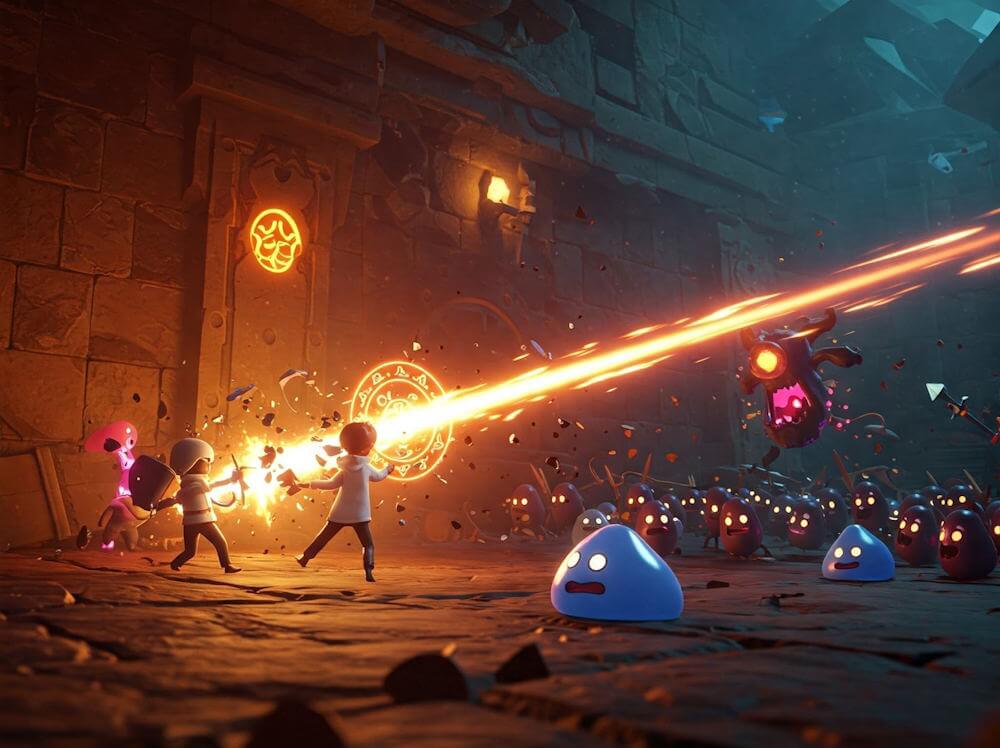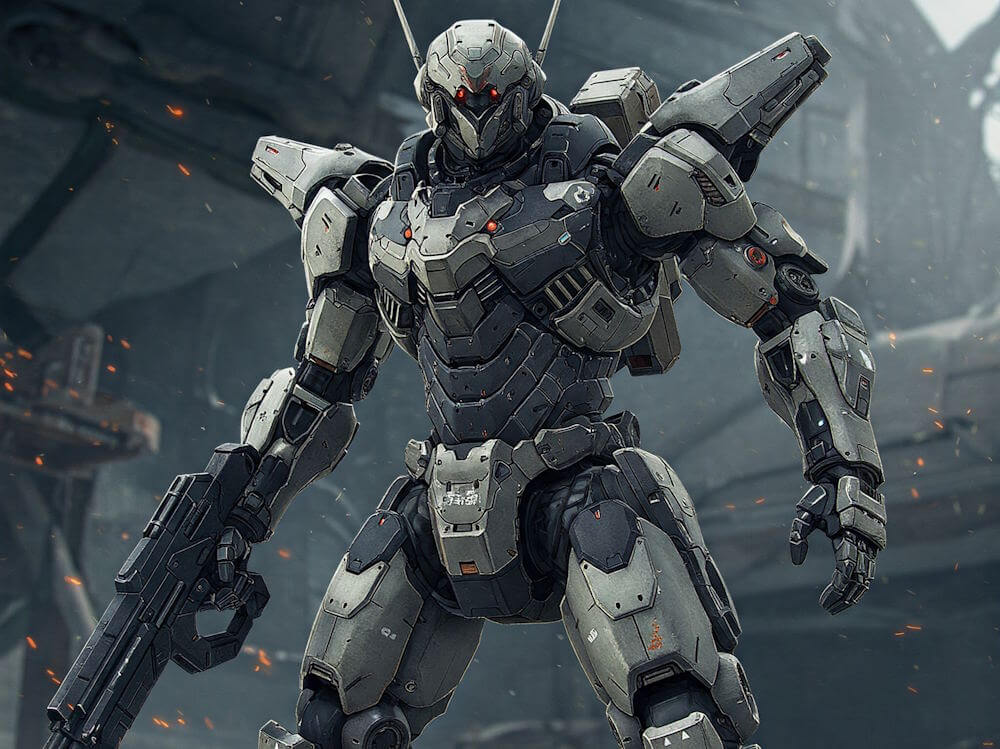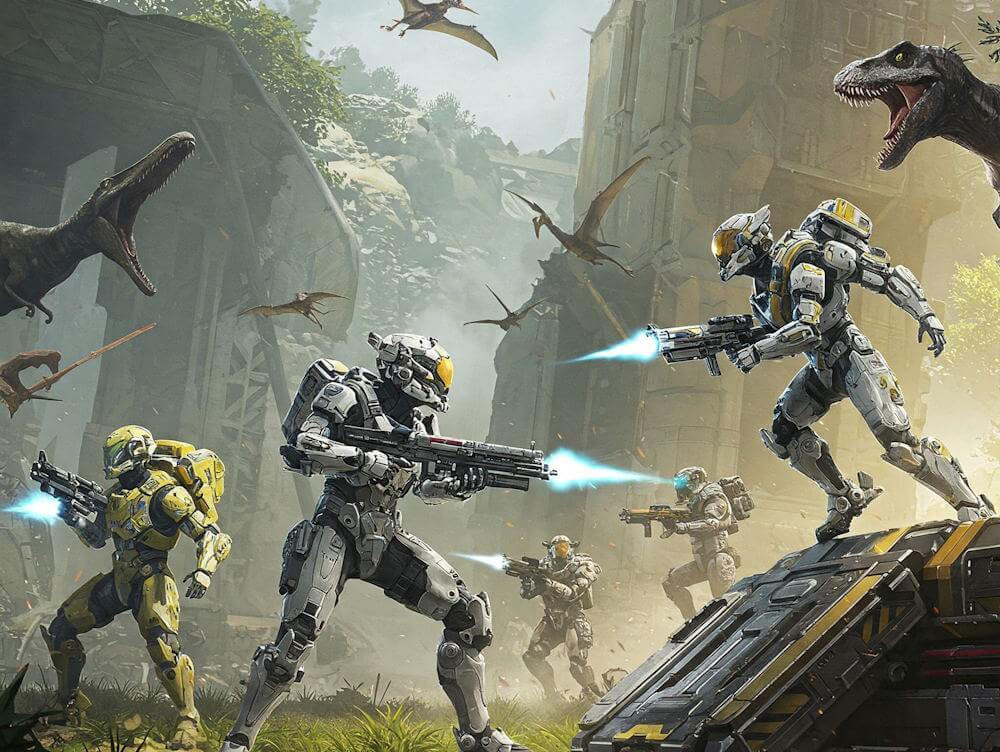‘Nobody Saves the World’ is a distinctive action role-playing game (RPG) developed by DrinkBox Studios, known for their innovative approach to game design. Released in early 2022, the game has garnered attention for its unique blend of dungeon crawling and a compelling transformation mechanic. In ‘Nobody Saves the World,’ players assume the role of a customizable character who can morph into various forms, each with distinct abilities and playstyles. This transformation system not only adds layers of gameplay but also elevates the overarching narrative and engagement.
The development journey of ‘Nobody Saves the World’ was characterized by a blend of creative experimentation and player feedback. DrinkBox Studios, building on their success from titles such as ‘Guacamelee!’, aimed to innovate within the RPG genre by allowing players to explore a vibrant world while overcoming challenges through their shape-shifting capabilities. This development philosophy is apparent in the game’s design, which emphasizes both exploration and strategic gameplay. Players can expect a range of character forms including a slug, a powerful dragon, and a valiant knight, each offering unique gameplay mechanics that encourage varied approaches to problems.
Game Mechanics: The Transformation System
In “Nobody Saves the World,” the core of its engaging gameplay lies in its innovative transformation system. This unique mechanic allows players to effortlessly switch between a diverse array of forms, each boasting distinct abilities and attributes. The transformation system distinguishes itself from traditional dungeon crawlers, which often confine players to a single character with standard abilities. Instead, players can adapt their strategy and playstyle by dynamically transforming into different characters, such as a horse, a knight, or even a more peculiar creature, each providing unique skills suited for different challenges encountered throughout the game.
This flexibility encourages players to think creatively, as they must choose the right form to tackle specific dungeons and enemies effectively. For instance, while one form might be particularly adept at dealing damage, another may possess the agility required to evade traps or access hidden areas. The need to combine forms strategically elevates the gameplay, prompting players to experiment with various combinations and abilities to overcome obstacles. This aspect of the transformation system injects a layer of depth into the gaming experience, as players can approach situations from multiple angles.
Furthermore, as players progress through their adventure, they can unlock new transformations and upgrade existing ones. This feature fosters a sense of growth and progression, maintaining player engagement. With each transformation complementing various gameplay mechanics, players find themselves encouraged to adapt, collaborate, and utilize strategic thinking. Consequently, the transformation system successfully distinguishes “Nobody Saves the World” from standard dungeon crawlers, allowing for a more immersive and varied gaming experience. The diverse forms available create opportunities for exploration and discovery, ensuring that players remain invested in their journey through the vibrant and ever-evolving world.
Dungeons: Design and Variety
The design of the dungeons in “Nobody Saves the World” serves as a vital aspect of the game’s overall experience, offering players a unique approach to dungeon crawling. Each dungeon is meticulously crafted with distinct layouts that not only challenge players but also encourage exploration and engagement. The diversity found in dungeon design allows players to encounter different settings and obstacles, contributing to a fresh experience every time they venture into a new dungeon.
One of the standout features of these dungeons is their environmental storytelling. Each layout is imbued with thematic elements that enhance the narrative without overt exposition. For instance, players may find hidden clues or environmental details that hint at the backstory of the dungeon’s inhabitants or the events that occurred there. This creates a deeper connection between the player and the world, enabling a rich sense of immersion.
The variety in dungeon types adds to the overall gameplay dynamic. Ranging from dark, ominous catacombs to vibrant, whimsical woodland challenges, every dungeon asks players to adapt their strategies. This variation not only keeps the gameplay engaging but also invites players to experiment with different abilities and character transformations. Incorporating unique environmental hazards or puzzle elements within these dungeons allows for varied tactical approaches, thus catering to different play styles.
Furthermore, the integration of challenges within these dungeons promotes a sense of achievement upon completion. Players encounter various enemies and must navigate traps that demand careful consideration and quick reflexes. The satisfaction derived from overcoming these obstacles fosters a rewarding gameplay experience and encourages players to return to previously conquered dungeons, often to uncover hidden secrets or to challenge themselves with increased difficulty settings.
Combat System: Mechanics and Strategies
Nobody Saves the World offers a unique combat system that distinguishes itself within the realm of dungeon-crawling games. Central to this system is the transformative mechanic that allows players to shift between various forms, each equipped with distinct attack styles and abilities. This versatility is critical for navigating the diverse enemy encounters that populate the game’s dungeons.
Each form, whether it be a knight, archer, or even a slug, possesses a set of unique abilities that cater to different combat situations. For instance, the knight excels in close-range combat with powerful melee attacks, while the archer provides ranged support with precise shots. This variety encourages players to experiment with different forms, optimizing their approach to combat based on the enemies they face. Furthermore, players can mix and match abilities—combining skills from various forms to create hybrid strategies that enhance their effectiveness in battle.
Effective combat strategies rely heavily on understanding both the strengths and weaknesses of each form. Players should assess the enemy types present in a dungeon and select forms that provide advantageous matchups. Ranged forms can mitigate damage while dealing consistent harm, whereas tank forms can absorb significant damage, allowing for a more aggressive attack pattern. The transformation mechanic serves as an essential strategy tool; players can rapidly switch forms mid-combat to adapt to changing circumstances and exploit enemy vulnerabilities.
The game’s combat design also incorporates cooperative play elements, encouraging teamwork to tackle more formidable foes. By coordinating attacks and combining different forms’ abilities, players can create powerful combos that can turn the tide of battle. Mastery of the combat system, along with a keen understanding of each form’s capabilities, is crucial for succeeding in Nobody Saves the World’s challenging dungeons.
Quests and Challenges: Engaging Objectives
In “Nobody Saves the World,” players encounter a rich tapestry of quests and challenges designed to enhance engagement and keep the gameplay dynamic. Each quest introduces unique objectives that require players to think creatively while exploring the diverse environments within the game. The quests are divided into various categories, ensuring players have an array of goals to pursue based on their interests and play styles.
One of the most appealing aspects of the quests in “Nobody Saves the World” is their variety. Players can participate in traditional tasks such as defeating specific enemies or collecting items, but the game frequently incorporates inventive challenges that require players to transform into different forms to solve puzzles and navigate obstacles. This transformation mechanic is fundamental, allowing players to experiment with different abilities and uncover new strategies. As players progress, they may encounter more complex challenges that demand not only mastery of their current forms but also a willingness to adapt and try new approaches.
The motivational structure behind the quests is another key element. Completing objectives rewards players with experience points, unlocking new forms and abilities that are crucial for further exploration. Additionally, players earn currency that can be used to unlock special upgrades, reinforcing the feeling of progression and achievement. The combination of varied objectives and rewarding experiences serves to maintain player engagement. With each completed quest, players are encouraged to delve deeper into the game’s world, discovering hidden secrets and honing their skills as they tackle increasingly difficult challenges.
Ultimately, the quests and challenges in “Nobody Saves the World” are meticulously crafted to facilitate an engaging gameplay experience. Their diversity, coupled with meaningful rewards, keeps players motivated to explore, engage, and enjoy every aspect of this unique dungeon-crawling adventure.
Art Style and Graphics: A Unique Aesthetic
“Nobody Saves the World” features a distinctive art style that sets it apart from traditional dungeon crawlers. The game’s visual appeal is characterized by vibrant colors, imaginative landscapes, and whimsical character designs. This artistic approach contributes significantly to the overall atmosphere, creating an engaging experience that immerses players in its unique world.
The visuals in the game not only enhance its playful tone but also serve to differentiate the various dungeons and environments players explore. Each area is infused with bold, saturated hues that evoke a sense of wonder and curiosity. This artistic choice invites players to venture through the colorful landscapes, encouraging exploration and interaction with the game’s elements. As players navigate the dungeons, the variety of colors and dynamic artwork helps maintain a sense of excitement, effectively conveying the mood of each setting.
Additionally, the character designs in “Nobody Saves the World” are quirky yet endearing, making each transformation feel special and rewarding. Players can morph into various forms, each with its own unique abilities and artisanal flair. This feature not only enhances gameplay but also adds a layer of visual enjoyment as players witness the fluidity of their transformations against the backdrop of the game’s vibrant environments.
The combination of whimsical aesthetics and engaging graphics facilitates a deeper emotional connection between the player and the game world. The art style effectively complements the narrative, crafting a whimsical universe where humor and adventure abound. Overall, the visuals of “Nobody Saves the World” play a crucial role in enhancing player immersion, making it a memorable title in the dungeon-crawling genre.
Soundtrack and Audio Design: Enhancing the Experience
The soundtrack and audio design in “Nobody Saves the World” play a crucial role in immersing players within its vibrant dungeon-crawling environments. A thoughtfully composed soundtrack enhances the adventure, providing a rich auditory backdrop that complements the game’s whimsical and dynamic visuals. The compositions are tailored to reflect the fast-paced and often unpredictable nature of gameplay, featuring various musical styles that adapt to the changing scenarios players encounter in dungeons. This musical diversity not only serves to energize players during combat sequences but also aids in emphasizing quieter moments of exploration and puzzle-solving.
The audio cues are particularly instrumental in guiding players through the action-packed experience of dungeon crawling. Subtle sound effects, from the clinking of armor to the ambiance of each uniquely themed dungeon, enrich the immersive quality of the game. These audio elements also provide feedback on player actions, warning of impending dangers or signaling the successful completion of tasks. This careful integration of sound design allows players to respond intuitively to gameplay challenges, ultimately enhancing the strategic aspects of navigating through dungeons.
Additionally, the emotional tone of “Nobody Saves the World” is further amplified through its audio landscape. Music shifts in intensity and style, mirroring the progression of challenges within dungeons. This adaptability allows players to feel a deeper connection with their environment, fostering an emotional investment in their quest. For instance, the transition from peaceful melodies during exploration to frenetic rhythms during battles creates a compelling dynamic that heightens the gameplay experience. In “Nobody Saves the World,” the marriage of soundtrack and audio design brilliantly enhances the overall atmosphere and engagement, making every encounter memorable in the realm of dungeon crawling.
Community and Multiplayer Aspects
Nobody Saves the World incorporates a robust community and multiplayer experience that enhances the overall gameplay. The cooperative multiplayer feature enables players to team up with friends or other players online, creating a shared adventure in the whimsical world of the game. The ability to collaborate while dungeon crawling not only makes the gameplay more engaging but also fosters a sense of camaraderie among players. The shared challenges faced in navigating dungeons, battling enemies, and solving puzzles require communication and strategic planning, enriching the cooperative experience.
Moreover, players can share their unique experiences through various platforms, allowing them to discuss strategies, tips, and tricks. These discussions often take place on social media, gaming forums, and dedicated community platforms. Sharing strategies for tackling particularly difficult dungeons helps create a sense of community, as players learn from one another and adapt their approaches. This exchange of ideas enhances the cooperative play, as players can adopt new methods for overcoming obstacles in the game. The community aspect is further emphasized by the diverse character transformations that players unlock while progressing. Each character offers unique abilities, unlocking a myriad of customizable strategies for multiplayer engagements.
Additionally, Nobody Saves the World encourages player interactions by introducing challenges that can be completed in tandem. Completing these challenges often leads to rewards that enhance character abilities and improve gameplay fluidity. The multiplayer experience is designed to be not only fun but also rewarding, as players collaborate to achieve common goals. By engaging in cooperative play, players cultivate an environment of teamwork, support, and engagement, which in turn enriches the overall game experience.
Conclusion: The Impact of Nobody Saves the World
In recent years, indie games have increasingly carved out a niche within the broader gaming landscape, and Nobody Saves the World serves as a compelling example of this evolution. Developed by Drinkbox Studios, this title revitalizes the dungeon-crawling genre by merging action with whimsical storytelling and unique gameplay mechanics. Its impact can be seen not only in its innovative approach but also in how it challenges traditional elements typically found in cooperative gameplay.
The versatility of character transformation in Nobody Saves the World is one of its most significant contributions to the genre. Players can switch between various forms, each with its own abilities and traits, fostering a customized gaming experience that encourages exploration and creativity. This mechanism promotes strategic thinking and allows players to tackle challenges in diverse ways, making each dungeon run feel unique. Such innovation is essential in the indie space, where fresh ideas often lead to defining new gaming trends.
Moreover, the art style and humor embedded in the game’s narrative create an inviting atmosphere that appeals to a wide audience. The combination of engaging aesthetics and entertaining dialogue resonates with players, offering a break from the often serious tone found in many dungeon-crawling titles. This accessibility is crucial as it invites not only seasoned gamers but also newcomers to partake in the adventure.
Considering these elements, Nobody Saves the World stands out in the indie gaming community, not just as an enjoyable title but as a cornerstone for future game developers aspiring to push creative boundaries within this genre. Players seeking a distinctive blend of challenge and enjoyment are encouraged to explore this game, as its unique approach to dungeon crawling may redefine their expectations for this type of experience. Embracing the uniqueness of Nobody Saves the World will undoubtedly enrich the gaming journey of many.



